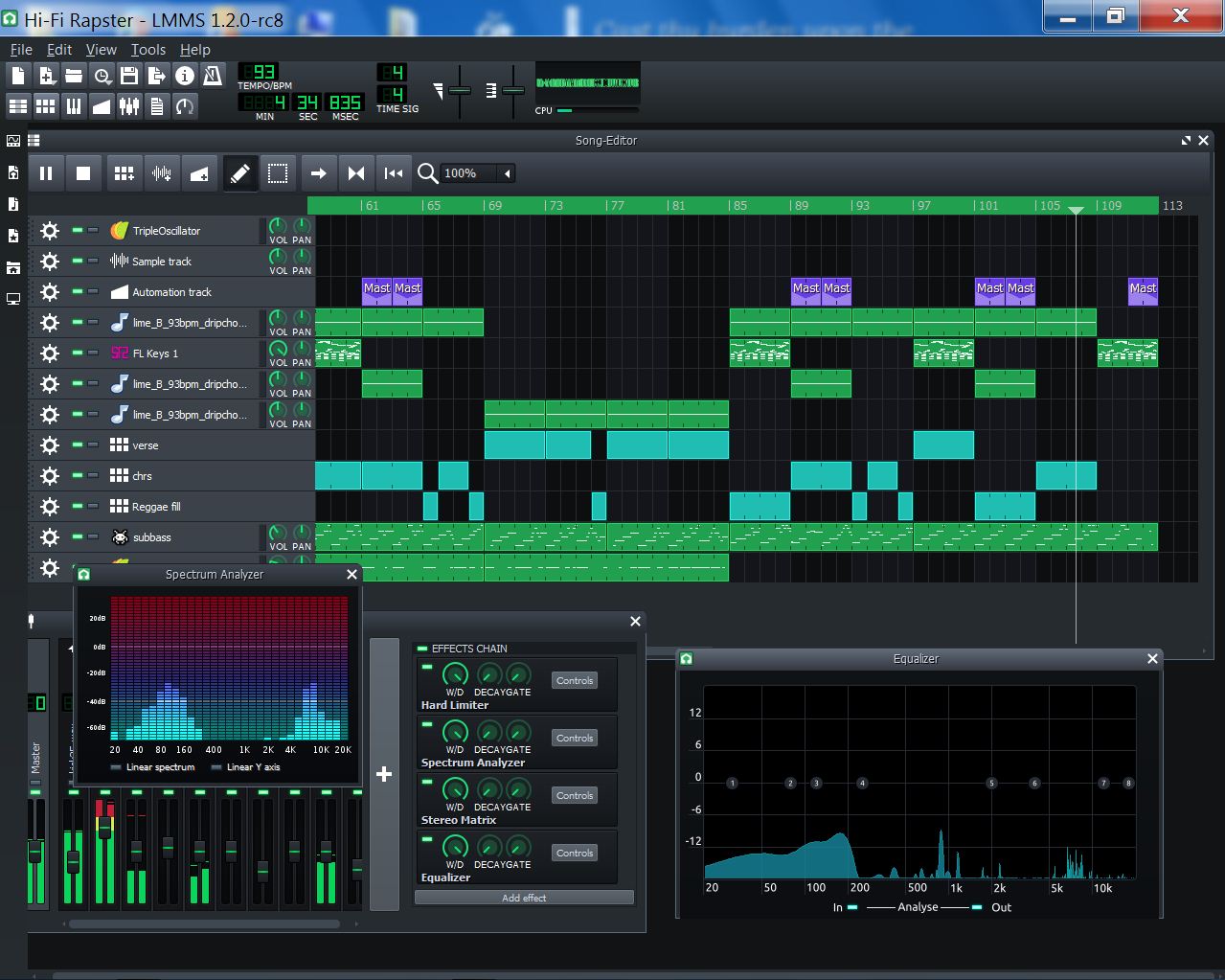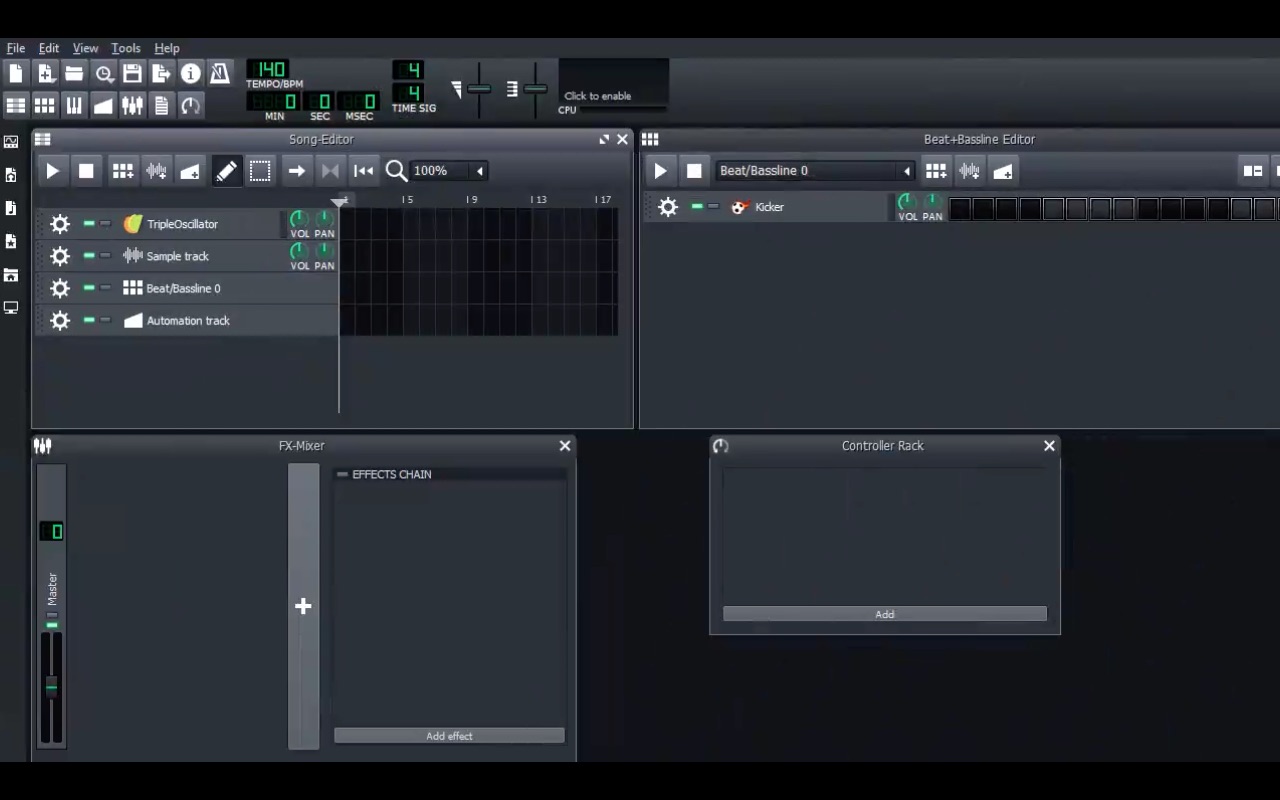

However, of course that would require a huge amount of work, so I can understand that the LMMS team is not too keen on tackling this. Also GIMP switching defaults from floating docks to tiles a while ago worked really well in my opinion. Blender is a good example of a tool that gets this right. Ultimately I think a tiling approach would work better than the “many floating windows” approach LMMS currently uses.


Also, I’d give bonus points for ensuring that sub-windows actually stay within the visible workspace when resizing the main window. At the very least, widgets should auto-resize when the main window changes size. I found myself constantly resizing and moving around things, in order to be able to interact with more than one sub-window. Everything tends to get crammed into the upper left corner, while the bottom and right part is mostly a gray void. LMMS does not make very efficient use of the available screen space. What I’m less thrilled about is the overall UI layout. Anyway, that blurry pixel mess of yonder certainly won’t be missed. While LMMS has always had a strong focus on this, in the early days it was very much a case of wanting too much and achieving too little. I was also positively surprised by how clean and polished most of the UI widgets are nowadays, and I’m happy to hear that the LMMS team is planning even more improvements in that area. mmp file), and I’ve not experienced any audio issues whatsoever either. Also, it runs very stable on my machine (crashing only once when I was trying something weird with a hacked. That in itself is quite a feat for such a large application. Compilation was straightforward and worked out of the box on my semi-broken Gentoo system. I’ve had to recompile LMMS a few times before I had a version that produced project files compatible with dat zekt’s setup. Also, once you do get stuck, the documentation is generally helpful and to the point, albeit a bit sparse at times. In that respect, LMMS wins out over pretty much any other Linux DAW I’ve tried so far. With a few notable exceptions, things are intuitive to the point that you’ll be happily composing your first track within 15 minutes of opening the application for the first time. The number one positive thing I can say about LMMS is that it was really easy to get started (again). So, after using LMMS daily for the past month, I’d like to share a few thoughts on it. And, to my surprise, the experience hasn’t been completely awful. Then again that was more than a decade ago, so I felt that maybe it was time to give it another try. Initially I was rather sceptical, since I strongly disliked LMMS the last time I tried it out. So dat zekt suggested we give LMMS a try. However, we knew this wasn’t going to be feasible this time, considering the constraints.
#LMMS WINDOWS PC#
So instead we went looking for a way of collaborating online without blowing through the rather tight monthly data limit I’m currently “enjoying”.įor the PC side of things, we normally stick to a mix of Milkytracker, HammerHead, Hydrogen, and Buzé, with the main sequencing work being done in Audacity. Long story short, as we live in different countries, we simply couldn’t meet up this year. But well, things are a bit different these days. Normally, dat zekt and me would have locked ourselves in at the studio for the month of December, to record a new Doppelplusungut.

Nothing better than a good old rant to brighten up the day in this dull gray weather we’ve been having for several weeks now.


 0 kommentar(er)
0 kommentar(er)
